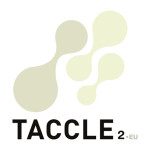Overview
The goal of this activity is to learn how to analyse portraits or paintings that depict people. Students will be encouraged to re-enact the depicted scene, assuming the role of the human subjects portrayed. In order for them to understand what the artist is trying to convey, it is crucial for them to be able to interpret what the people are doing, what they may be thinking and the context of the scene depicted. This is also an opportunity to discuss interpretation of art and how it is possible for different people to have different interpretations of the same artwork. They will also need to investigate the context in which the portrait was painted e.g. the era, status of the subject, any political or social influences on the artist or the sitter.
Description
This activity has two possible introductions: If students have completed the previous activity, they can choose one image from their (or another group’s) Flickr gallery. If they have not worked on any previous activity, they should go to the list of museums websites at the back of this handbook, select a museum, and then select their favourite portrait from one of the collections. You may want to suggest that they choose a portrait or image that contains at least 2 subjects as this often gives the greater scope for interpretation.
Once they have chosen, ask them to imagine what the subjects are doing, or what they are thinking. Ask them to consider why, in that moment, they are depicted in the way that they are and ask them to expand on the context, explaining what they think happened following that scene. They should discuss these (and any other questions) in groups. Ask them to note everyone’s ideas and interpretations. Ask them to distil their ideas down into one scenario or story. This will be their “story behind the picture”.
Ask students to record a video (3 min maximum) that will tell the story that lies behind picture. They could focus on the protagonist or on the secondary figures. They can present a literal or figurative interpretation but, as part of their presentation, they must outline what they think happened following the scene captured in the artwork. They are free to use drawings, photographs, stop-motion video techniques, or any other that they deem appropriate. Very often, the artwork lends itself particularly well to one particular technique and it is interesting to see if students are able to identify the most appropriate. Finally, share the video on YouTube but be sure the privacy setting is on ‘private’.
Time needed 3 hours.
Resources
-
One device with Internet access per group.
-
Digital camera (or mobile device with camera, as a PSP or a mobile phone).
-
YouTube.
Hints and tips
-
Recommended to them that the video is no longer than three minutes in length.
-
Remind them of any relevant school rules regarding using cameras.
-
The activity can be done individually or in pairs.
-
Remind them to check that pictures from the Internet are under the appropriate Creative Commons license.
—> Around the World in 6 Museums
This post is also available in: Dutch




 English
English Nederlands
Nederlands Deutsch
Deutsch Italiano
Italiano Español
Español Português
Português Română
Română Cymraeg
Cymraeg
Trackbacks/Pingbacks
[…] Station 3: Inside a Painting Students create video presentations to present their interpretations of famous works of art. They use YouTube to publish their work. […]